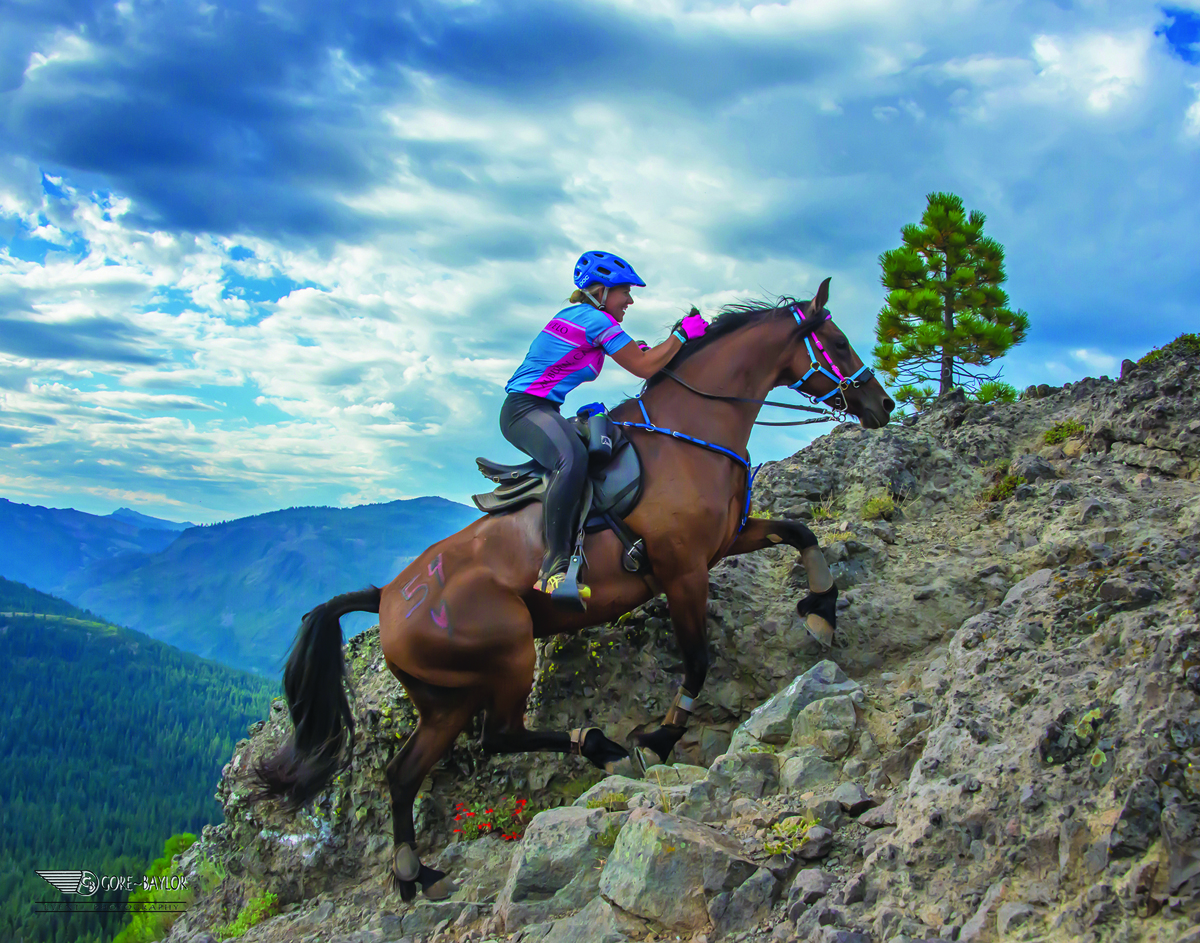Stories from an Extreme Sport
by Michael Campbell, AERC President

If you’re not an endurance rider (yet), it may be difficult to believe that people would do this sport on purpose. It takes a certain dedication and toughness to pursue endurance riding (50-100 mile rides) and limited distance (LD) riding (25-35 mile rides). If the stories below intrigue you, join AERC right away. If you find them horrifying, maybe this isn’t the sport for you.
Endurance riders are not quitters, and have a low tolerance for it. One tough woman endurance rider brought a lady friend to try a limited distance ride on a well-seasoned horse. The woman came into her first vet check of the 50 mile ride and asked the timer about her friend. The timer explained that the horse was fine, but her friend had pulled after the first loop of the LD because she was just too fatigued. The rider exclaimed, “Oh, no!” and stormed off to find her friend who soon returned, helmet and horse in hand, to complete the second loop. That friend was later so proud of finishing the ride that she went on to complete many more. Even when things get tough, endurance riders don’t quit.
Endurance riders are not whiners, but they can have a sense of humor about whining as they find creative ways to discourage it. At a ride late in the year, the wind was blowing, rain soaked everything, the temperature was dropping and everyone in camp was . . . well, feeling “challenged.” One new rider was hanging around the vet check area and complaining that she just didn’t feel good and maybe she would quit because she might be coming down with something. The vets were checking the horses’ temperatures that day and the new rider’s friend was assisting. She got tired of her friend’s complaining and said, “Let’s see if you have a fever.” She then shoved a thermometer on a string into the girl’s mouth and, after a couple of minutes added, “Nope, you’re okay, now go!” Everyone got a chuckle, even the newbie. When it was explained to her later that the thermometer on a string was for the horses’ rectal temperatures, she proceeded to use up a whole bottle of mouthwash.
At the pre-ride check in one rider, proud of his bay mare, trotted her out on a very loose lead line. They turned at the cone and headed back toward the vet. The mare was feeling good at a vigorous trot. She felt so good that she wandered to the end of her lead and kicked up—not aggressively, just excited—catching her handler right in the groin. An audible gasp erupted from the crowd and the male observers cringed. One of the vets started to jog toward what he was sure would be an emergency situation, but the endurance rider just kept on trotting his horse (that got an A+ for attitude). He caught the kick at the end of the arc, fortunately in a non-vital part of his anatomy. Like all endurance riders, this guy not only volunteered for this, but paid money for it!
One last anecdote: Some years ago we were warming up our horses for a 4:00 a.m. start of a 100 mile ride. The weather was freezing. It was so cold that the lady in the camp next to ours woke to find her contacts had frozen in their container. As the ride manager took roll and her husband helped, one of the riders commented, “I can’t believe we’re out here riding in this weather.” The manager’s husband responded, “Yep, and I can’t believe I’m out here watching you.”
This is a volunteer organization. Our members pay to do this for fun, a sense of personal accomplishment and because they love spending time with their horses. We have over 5,000 members across the U.S. and Canada. Non-endurance people can’t believe we pay to do this. They have a hard time believing that we actually ride 25, 50 or 100 miles in a day. People often respond to this fact by asking, “In one day?” We’re tough, we don’t quit, we don’t whine, and we laugh. We have great stories and, in our dotage, we’ll have even better memories. Only 1 in 60,000 citizens of this country can say they do this remarkable sport. We hope you will choose to join in the fun.
More information on endurance riding is available by visiting www.aerc.org or by calling the AERC office at 866-271-2372. By request, the office will send out a free information packet to prospective members.

The Colorado Horse Source is an independently owned and operated print and online magazine for horse owners and enthusiasts of all breeds and disciplines in Colorado and surrounding area. Our contemporary editorial columns are predominantly written by experts in the region, covering the care, training, keeping and enjoyment of horses, with an eye to the specific concerns in our region.

